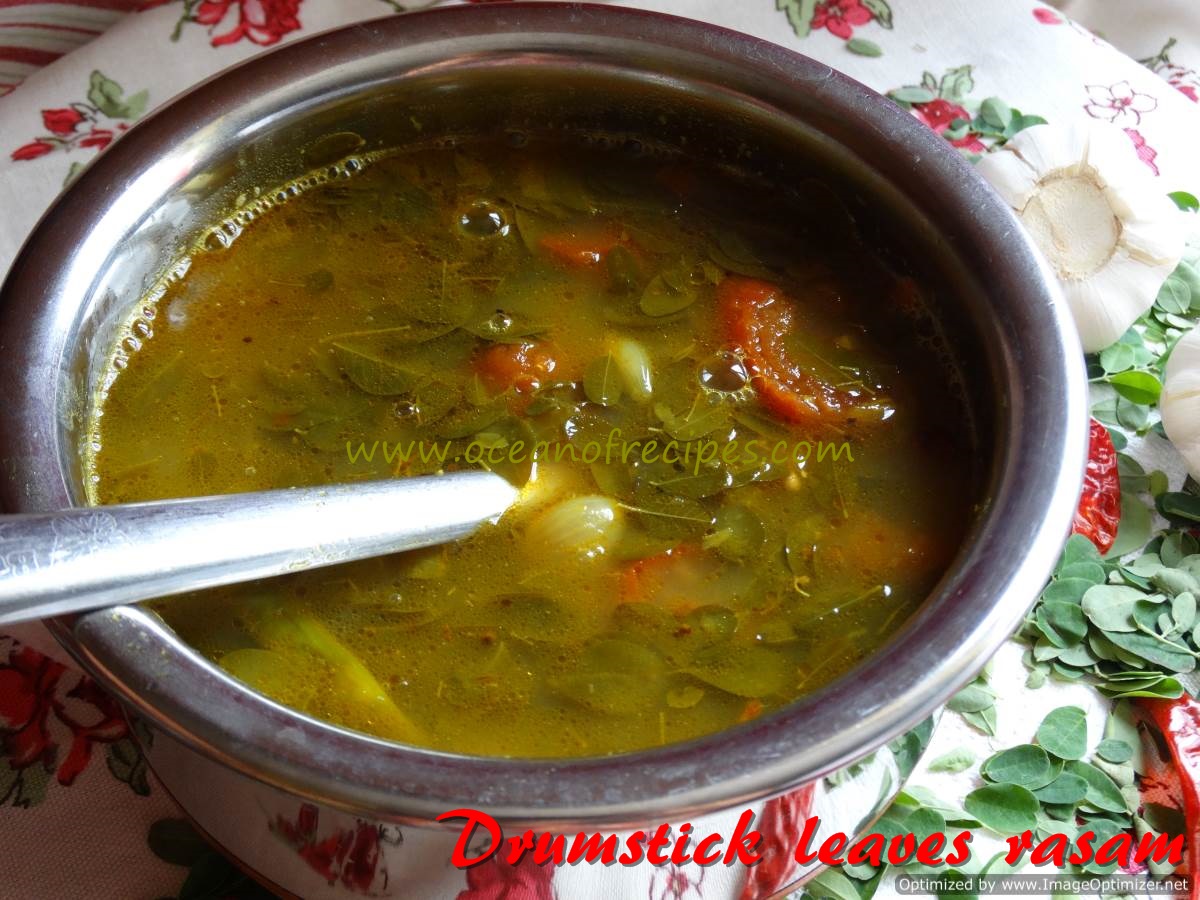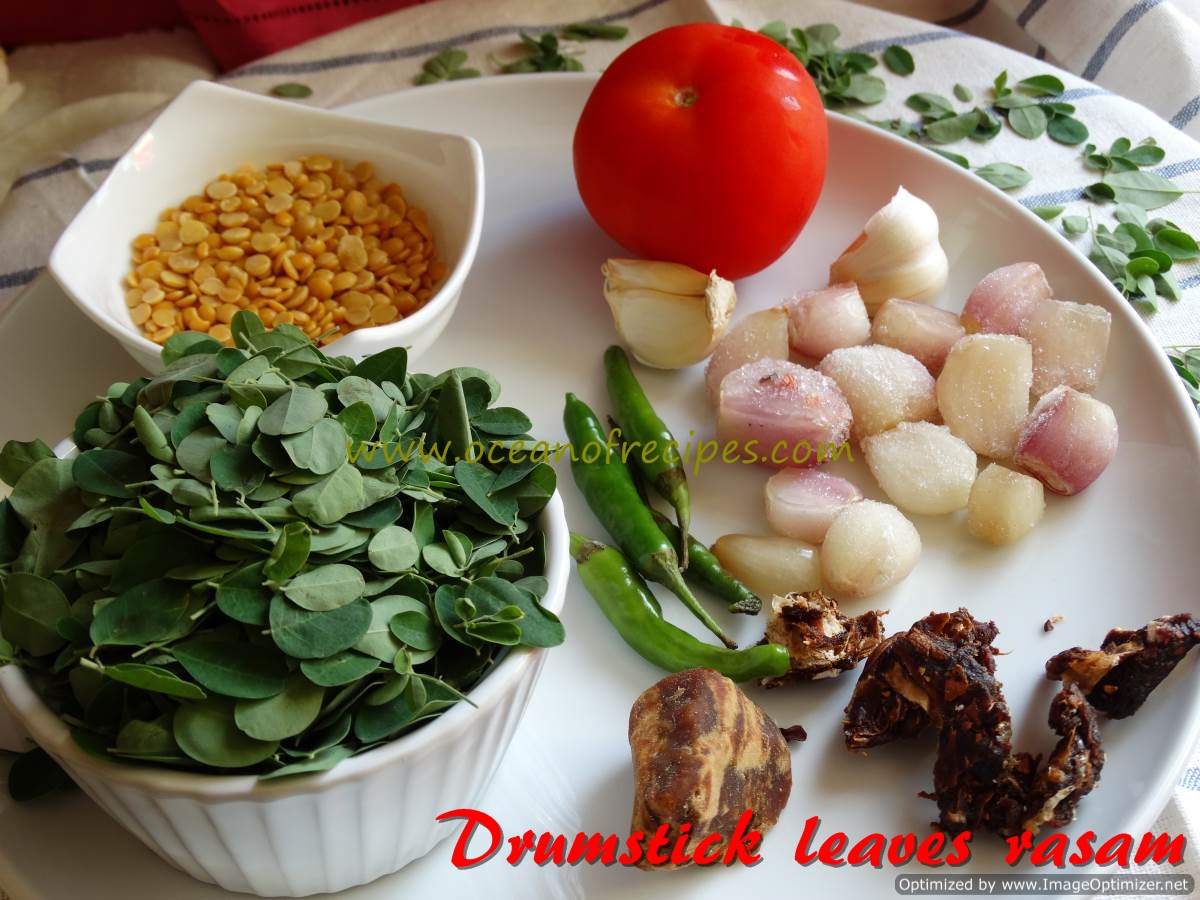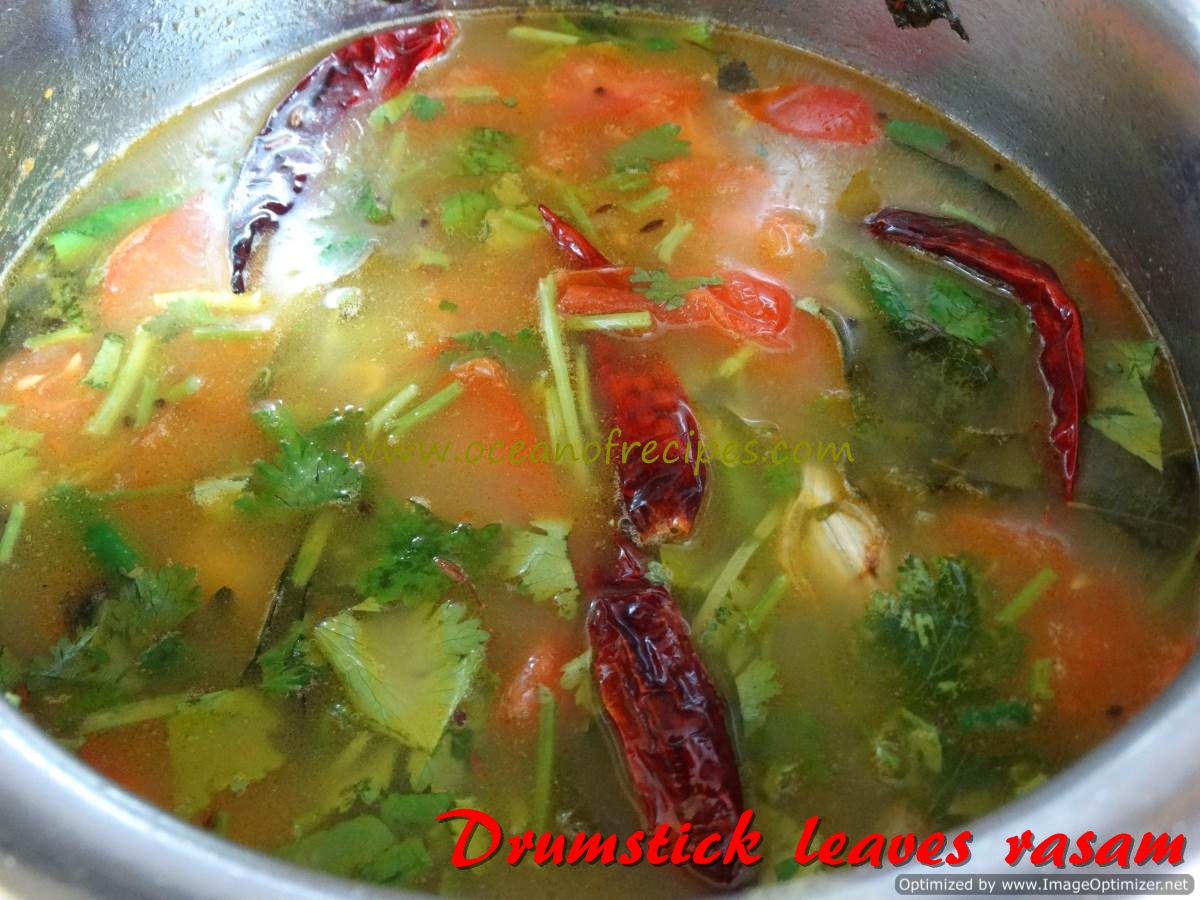Drumstick leaves rasam is popular in Andhra Pradesh (India) and is widely used in the southern part of India. Drumstick leaves is called murungai keerai in Tamil and munaga aaku in Telugu. Drumstick leaves are very healthy and has a good and valuable source of vitamin C, proteins, iron and potassium. It has very high medicinal values. It is a good source of iron for pregnant women.
There are few varieties of drumstick leaves rasam, which I prepare at home. I have already shared my mother's recipe. This lentil and drumstick leaves rasam, which is sweet and sour, is a recipe from my grandma's neighbour. The sweetness is from the sambar onions and jaggery and sourness is from tamarind and tomato. The combination of both with lentil and drumstick leaves makes this rasam taste awesome and delicious. This rasam is very easy to make and tastes very delicious with plain rice and any stir fried vegetable or fried non-veg side. Refer to my other drumstick leaves rasam recipe.
Preparation time: 15 mins (excluding plucking the leaves)
Cooking time: 30 mins
Cuisine: Andhra Pradesh
Serves: 4
Spiciness: Medium
For boiling dal
For rasam (additional ingredients)
Tempering / tadka
Boiling dal
Tempering and cooking rasam











